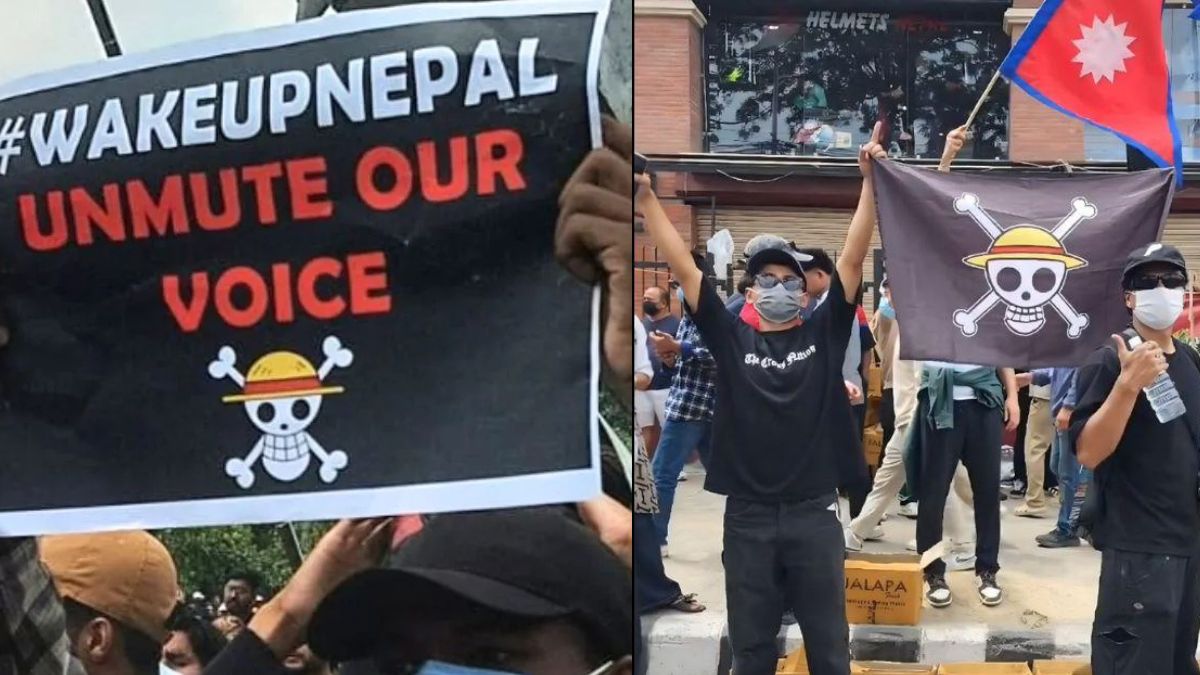The Jolly Roger flag from the iconic Japanese anime and manga series One Piece has emerged as a powerful symbol of resistance in Nepal’s recent anti-government protests. As thousands of young demonstrators rally against censorship, corruption, and the leadership of Prime Minister K.P. Sharma Oli, the grinning skull adorned with a straw hat has become a beacon of defiance. But why are Nepal’s protesters waving this One Piece flag? Let’s explore the reasons behind this striking choice and its deeper significance.
The Context of Nepal’s Protests
On September 8, 2025, Nepal’s government sparked widespread outrage by imposing a sweeping ban on major social media platforms, citing concerns over fraud and misinformation. Students and youth activists condemned the move as a blatant attack on free expression, leading to massive protests in Kathmandu and other cities. According to hospital officials, the unrest resulted in 19 deaths and over 400 injuries nationwide. Although the government lifted the social media ban later that night, the protests have continued, with demands for Oli’s resignation and action against systemic corruption.
Amid these demonstrations, the One Piece Jolly Roger flag, associated with the Straw Hat Pirates, has been prominently displayed, symbolizing the protesters’ fight for freedom and justice.
The Symbolism of the One Piece Jolly Roger
The Jolly Roger flag, featuring a grinning skull wearing a straw hat with crossed bones, is the emblem of the Straw Hat Pirates, led by the protagonist Monkey D. Luffy in One Piece. Created by Eiichiro Oda in 1997, One Piece is the best-selling manga in history, with a global franchise spanning anime, films, and a popular Netflix adaptation. The series is renowned for its themes of freedom, rebellion, and resistance against oppressive systems, particularly corrupt governments.
In One Piece, the World Government often brands Luffy and his crew as terrorists for challenging its authority. This narrative resonates deeply with Nepal’s youth, who see parallels between their struggle and the Straw Hat Pirates’ fight against control and injustice. By waving the Jolly Roger, protesters are embracing its symbolism as a refusal to submit to government censorship and corruption.
A Global Symbol of Defiance
Nepal is not the first country to adopt the One Piece Jolly Roger as a protest symbol. In August 2025, Indonesian demonstrators used the flag during anti-government protests leading up to the country’s Independence Day. The emblem was flown above vehicles, displayed on storefronts, and even hoisted in place of the national flag in some areas. Despite drawing criticism from Indonesian politicians, who called it divisive, the flag’s use underscored its universal appeal as a symbol of resistance.
In Nepal, the Jolly Roger serves a similar purpose. Protesters have paired it with slogans like “#WAKEUPNEPAL” and “UNMUTE YOUR VOICE,” signaling their determination to challenge government control. For many, the flag represents a collective stand against systems that suppress dissent and punish free speech.


